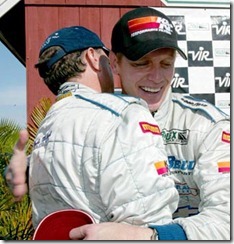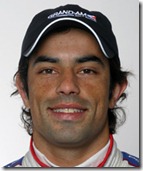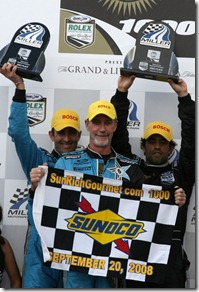If Jackie Gleason’s The Jackie Gleason Show still is on the air, somewhere, those unfamiliar with the above phrase should tune it in, if nothing else but for fully comprehending the meaning behind the title of this blurb.
Yes, the show probably isn’t nearly as sophisticated as some of today’s reality TV programming, especially those like Paris Hilton and Nicole Richie’s The Simple Life, but the master showman, who appeared opposite of Paul Newman in The Hustler, enjoyed producing and principally performing on the show, broadcast weekly for five seasons “From Miami Beach, the sun and fun capitol of the world!”
Uttered by an arm-pumping, knee-lifting and leg-swinging Gleason exiting stage left, it immediately preceded the sure-to-follow double entendres, obfuscations, chuckles and pure bulls . . . um, horse hockey.
And so it was on May 16 when Duncan Dayton announced his Highcroft Racing had withdrawn from the 2011 24 Heures du Mans.
“I am deeply disappointed for our team at Highcroft Racing who were really looking forward to the race and for David (Brabham) and Marino (Franchitti) who are left without a ride at Le Mans at a very late stage,” Dayton said in a prepared statement released by Highcroft.
Now five days beyond the announcement (as this is written), nothing at all concerning the matter has emanated from Dayton’s most prominent 2011 partner and engine supplier, Honda Performance Development (HPD), nor from yet another but evidently somewhat quieter associate also from the Honda fold, Honda R&D Americas, Inc., the both of which this season undertook a more noticeable team role after former Highcroft sponsor Patrón Spirits took its scantily dressed women over to the solely Patrón-stocked Extreme Speed Motorsports’ bar.
Beyond expressing regret for the team’s members, Highcroft’s May 16 exit statement alluded to Japan’s Mar. 10 earthquake, tsunami and subsequent $200 billion economic impact as being a proximate cause in the matter; it somehow being causal without the team having definitively stated such.
“We certainly appreciate the massive impact the earthquake and tsunami has had on the people of Japan and the huge challenges facing Japanese business,” Dayton said in the release.
(Um, though “appreciate” actually is accurately used in the statement one might consider shying from its use in the future in similar circumstances due to the word tending toward the “positive.”)
“It appears this may have contributed to Honda’s decision and we fully respect and understand their position.” (emphasis added, additionally noting that Houdini appeared to have done a lot of things he didn’t and that President Obama may have fixed health care but it’s a good bet he didn’t).
Then again, Japan’s unfortunate situation may not have at all contributed to “Honda’s” decision.
Honda Performance Development (HPD), located in Santa Clarita, Calif., and Honda R&D Americas, Inc., (HRA) Torrance, Calif., are two subsidiaries of roughly a dozen laboring under the umbrella of American Honda Motor Company, Inc. (AHM), also headquartered in Torrance, Calif.
Since 1993 HPD has specialized in automobile racing-related products, principally engines in the North American and European racing markets, as well as more recently entering the North American retail and wholesale “tuner” market.
Honda four-wheelers (ATV), boat motors, motorcycles and just “thinking” among other stuff are principally the province of HRA, which has a large Ohio manufacturing presence and, hence, is among those who will pack the Aug. 7 Honda Indy 200 at Mid-Ohio.
And, lest they be forgotten, there are Honda’s Marysville, Ohio, Honda Accord factory workers who also have been known to make the Mid-O show much larger than might’ve otherwise been possible, given previous ownership attitudes.
Indeed, these Ohio folks work so doggone hard that high quantities of high-quality “Hondas” of various descriptions are produced and Honda ultimately ships about 15-percent of its total annual production to worldwide export markets.
Back in the States, according to Wall Street Journal reporter Mike Ramsey, Honda executives on Friday, May 20, said that Honda car dealers weren’t pushing sales hard enough.
"It's interesting to note that although our total inventory is down versus May 2010, we have more CR-Vs, Pilots and Fits in dealer inventory now than we did a year ago," American Honda Executive Vice President John Mendel said in the Wall Street Journal story.
Furthermore, according to the same story, U.S. dealers were told July 2011 vehicle deliveries were expected to grow more than 11-percent over June 2011 deliveries, with overall inventory numbers accelerating through August 2011 and continuing the trend into year’s end.
Other readily available financial sources show American Honda sales are up year over year – a growth rate that’s continued unabated from an overall 7.6-percent 2010 yearly sales increase over 2009.
So, um, where exactly might one find the supposedly soft quake-related numbers which in turn caused racing-program cuts?
More so, Marketing Daily on Thursday noted Honda’s rather considerable marketing push in conjunction with next week’s Indy 500, in the competition of which Honda (or HPD, if you prefer) has 33 engines.
Given the financial scope of Indy – and it’s plentiful, between solely sponsoring ESPN race-day cable programming; other print, TV and radio advertisements; ancillary live marketing efforts aplenty (probably at least a few of the bar girls formerly hanging at Highcroft); the personnel servicing those 33 engines; the Honda executives traveling to, staying at and eating at least one MacDonald’s meal daily in Indianapolis; and, probably, even more escaping attention herein, one can’t help but wonder why Honda hasn’t been able to squeeze out a lousy couple-million bucks for a sportscar team?
Thus, might another reason possibly be at the root of Highcroft reaching the end of its Honda road?
Let’s just suppose, for instance, that “Honda” itself decided to pull whatever “plug” it may have had at Highcroft?
Wild, ludicrous and unsubstantiated you say!?
In 2008 and 2009 the race-paddock rumor mill churned with reports of Audi being angered with the lack of ALMS prototype competition, supposedly having for years been repeatedly assured that such competition would exist.
In an Aug. 3, 2009 AutoWeek story entitled “Acura Likely to Quit American Le Mans Series LMP1 Program,” reporter Gary Watkins wrote, “Acura is understood to be unwilling to continue in LMP1 with De Ferran and Highcroft unless they have real opposition. Acura slashed the P1 development program when it became known last December (2008) that Audi would not continue in the ALMS.”
While it can be fairly said Gil De Ferran chose to “retire” from racing at the close of 2009, Adrian Fernandez reluctantly shuttered the doors on his championship-winning LMP2 Acura/HPD-assisted Lowe’s team after being told Acura was exiting stage right.
Come 2010, “HPD” replaced “Acura” in all things official as Patrón Highcroft Racing drivers David Brabham and Simon Pagenaud wrapped the team’s second championship title in as many years (Brabham was paired with Scott Sharp for the first, in 2009) and for which in 2010 HPD scored its first LMP title (exactly as the record books read, folks).
Bottom line: Despite HPD and HRA being a slightly more visible part of Highcroft’s ALMS effort, the team still needed more money from still other sources to undertake a Le Mans effort and, for that matter, the rest of the 2011 ALMS schedule.
“Le Mans is one of the greatest races in the world, but it requires significant financial and physical resources to compete at the highest levels. Whatever we do, we want to be able to do it properly and it just isn’t viable at this time without proper backing,” Duncan was quoted as saying in the team’s release.
Understanding Duncan’s disappointment – or reasoning, for that matter – isn’t difficult when one sees a dream derailed, as often happens in racing.
Understanding a probable effort on Duncan’s part to gracefully exit the series without burning bridges also shouldn’t be too difficult to grasp – it is what one must often do in business.
Yet, it remains odd that the split between Highcroft and “Honda” has yet to draw any sort of similar statement from “Honda,” HPD or HRA, as is the general practice when two parties, whether “at war” or old “friends,” make like a banana and split.
Right now, it appears Highcroft’s reasoning for the relationship’s breach may have overreached; just a tad.
Later,
DC

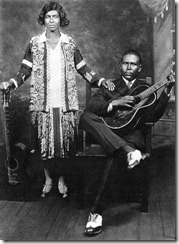
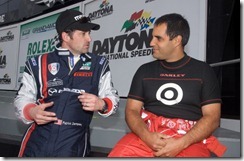

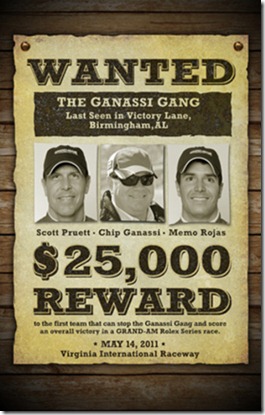
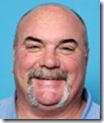
![pv_Indy-Flyer_1[11] pv_Indy-Flyer_1[11]](http://lh3.ggpht.com/_leXk-Qn_Rig/TcmfibPIFoI/AAAAAAAAApU/f1B3DAccr9s/pv_Indy-Flyer_1%5B11%5D_thumb%5B2%5D.jpg?imgmax=800)
